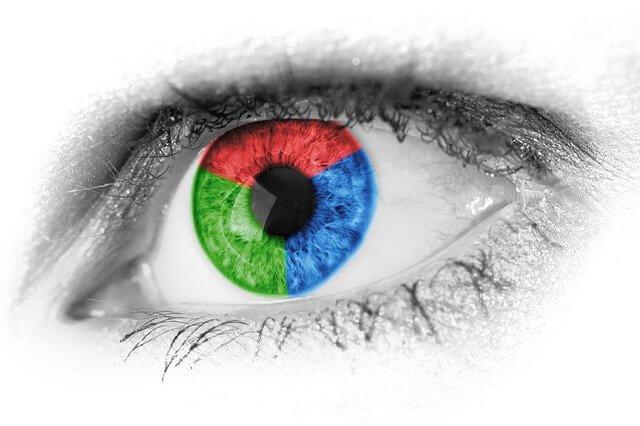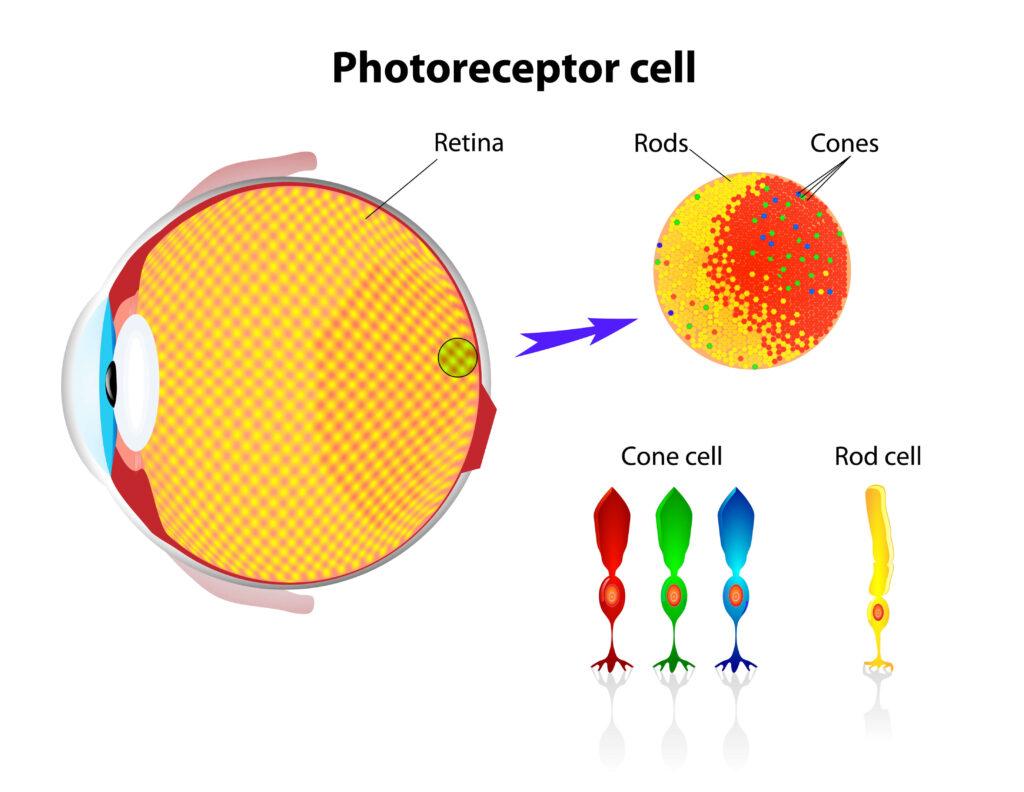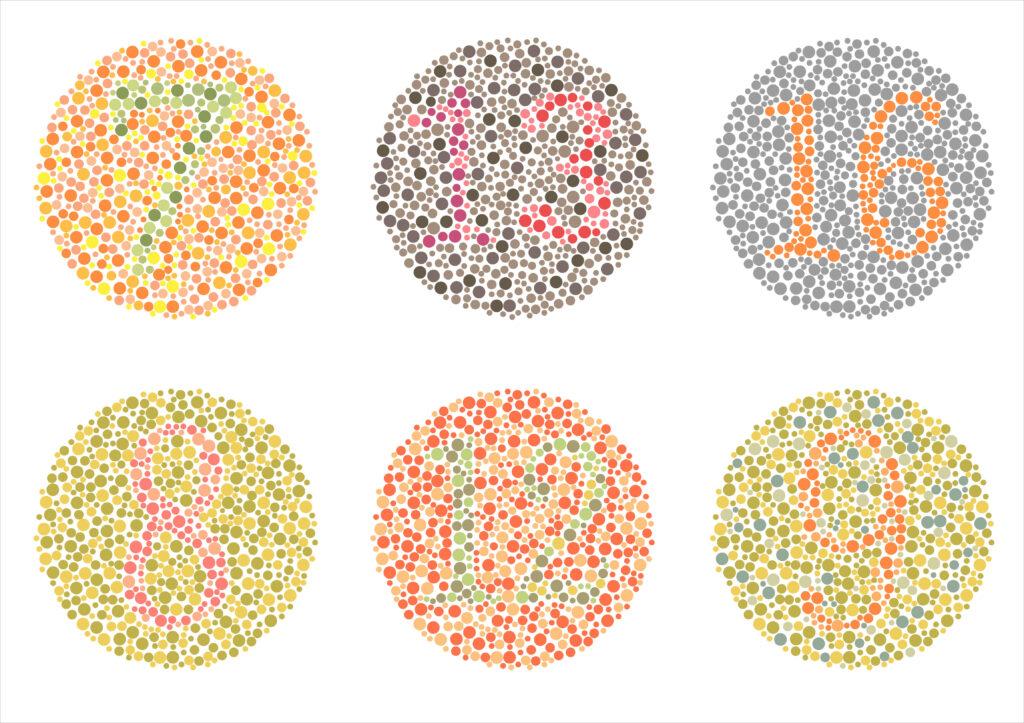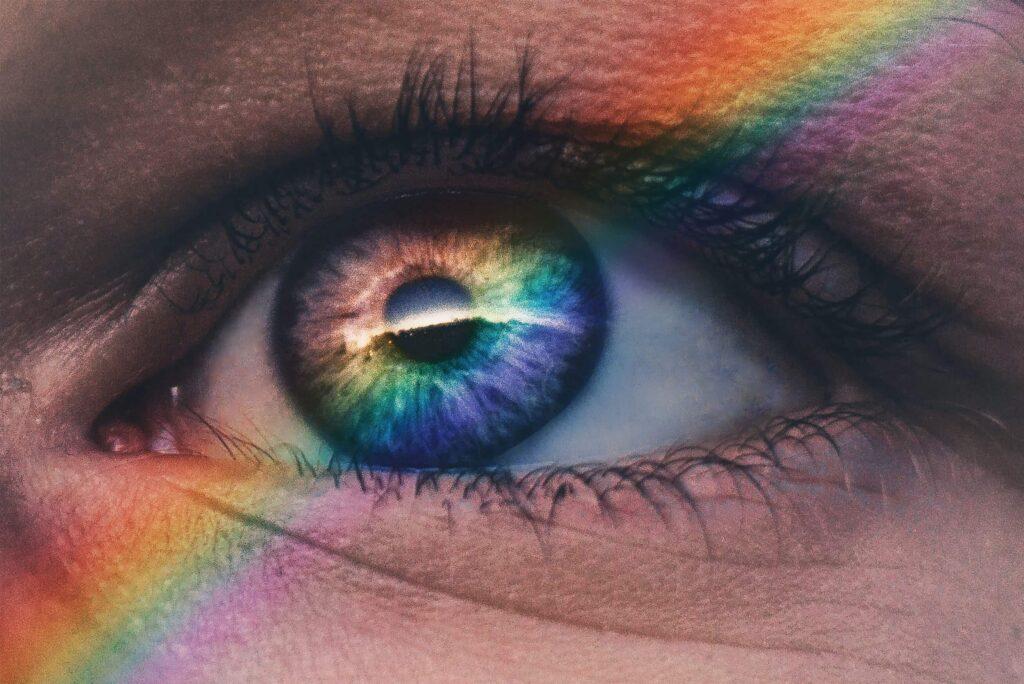Colour vision
Vision is the process of getting meaning from what we see and researchers estimate that 80 to 85% of our learning, perception, understanding and activities are mediated through vision.
A very important part of the information we gather with our eyes is derived from colour. We use colour so instinctively that we often forget how important it is in our day to day lives. Think about picking out a ripe fruit, stopping at a robot, watching sports teams, or helping your kids with an art project. For people who are colour blind/colour deficient, these tasks are a bit more complicated. Not all in the animal kingdom can perceive colour but those that can get valuable sensory information about their environment. They can use colour to avoid predators, forage for food and choose a high-quality mate.
Published:
31/08/2022

How do we see colour?
The visible light we see is a kind of electro-magnetic radiation. The retina at the back of our eyeball translates these light waves into nerve signals that are sent to our brain. Our retina allows us to see in dim and bright light and discriminates different wavelengths of light so that we can see colour.
There are 2 basic kinds of photoreceptors in the retina – rods and cones. Rods allow for vision in dim light and cones allow us to perceive different colours. The cones in the retina have light sensitive pigments that help us to recognise colour. Cones are sensitive to either red, green or blue light (long, medium or short wavelengths)

What is colour Blindness?
Colour blindness is a term that refers to colour vision deficiency – where the ability to see colours clearly is reduced. True colour blindness, where a person can perceive no colour at all is an extremely rare condition.
Normally, the pigments in the cones register different colours and send that information to the brain via the optic nerve. This allows us to discriminate countless shades of colour, but if the cones don’t contain one or more of these light sensitive pigments, we will be unable to see some colours. Colour vision deficiency can range from mild to severe, depending on the cause. Both eyes are affected if it is hereditary but only one eye may be affected if it is caused by injury or illness.
The most common form of colour deficiency is red-green (called deuteranopia when the green cones are affected and protanopia when the red cones are affected). There is a large myth that people with this form of colour deficiency can’t “see” red or green; only confuse red and green or see reds as greens and see greens as reds. This is completely false. These people are likely to confuse blue and purple because they can’t “see” the red element in purple. Potentially, the whole colour spectrum can pose problems as all colours are affected – reds greens, oranges, browns, purples, pinks and greys.

A rarer and more severe form of colour vision deficiency is blue-yellow (called tritanopia). Blue-yellow is a misleading term though because often, these people confuse blue with green and yellow with violet. It is more severe because these people often also have a red-green deficiency and they often see neutral grey areas where certain colours should be.
Even more rare is a total colour deficiency (called achromatopsia), where a person will only see in black, white and shades of grey
What are the causes and risk factors?
Colour deficiency is usually an inherited condition due to a x-linked recessive gene which is passed from mother to son. Disease or injury that causes damage to the optic nerve or retina can also lead to loss of colour recognition. Large, random population studies have shown that the prevalence of colour vision deficiencies is about 5% – 8% in men and about 0.4% – 1% in women
Diseases that can cause colour deficiency include:
- Diabetes
- Glaucoma
- Macular Degeneration
- Parkinson’s Disease
- Alzheimer’s Disease
- Multiple Sclerosis
- Chronic Alcoholism
- Leukemia
- Sickle Cell Anaemia
Certain medications can also affect your colour vision.
If you notice a sudden change to how you see colours, please call your doctor as this could be a warning sign of something more serious that needs to be investigated.
Colour vision tests
Do you sometimes get the feeling that you don’t see colours as clearly as you should? Or have you ever been told that something has different shades, but they all look the same to you? You may have a colour deficiency and don’t even know it – your eye care professional has quick, easy ways to test it for you.
The Ishihara colour test is one that most people will recognise when they see it. You will look at a series of circles made up for dots of varying sizes and colours. Some of the dots form shapes or a one or two digit number. If you have a colour deficiency, you may have trouble seeing these images or may see no image at all.

Is there a treatment?
There is no treatment for colour deficiencies that are passed down in families, but most people instinctively find ways to adjust to it. Children may need a bit of extra help in the classroom and adults may not be able to do certain jobs, like being a pilot.
If your colour deficiency is happening because of another health problem, you should see your doctor about treating the underlying cause. Likewise, if your colour vision problem is caused by a medication you are taking, speak to your doctor who may possibly adjust how much you take or switch you to a different medication.
Some people with colour deficiencies have found that colour-filtered lenses help them to distinguish colours in some situations, while others report that they don’t help at all or that they even cause more confusion.

References
- “Vision Is Our Dominant Sense” : Thomas Politzer O.D BrainLine November 2008. Reviewed 2018.
- “The Causes and Consequences of Color Vision” : Ellen J. Gerl & Molly R. Morris; https://evolution-outreach.biomedcentral.com/ Volume 1
- “Color Vision Deficiency” – American Optometric Association; https://www.aoa.org/healthy-eyes/eye-and-vision-conditions/color-vision-deficiency?sso=y
- NIH – National Library of Medicine : “World Prevalence of red-green color deficiency” Jennifer Birch 2012
- “What is Color Blindness” : Dr Ananya Mandal 2019
- “Color Blindness: When Red Looks Like Brown” : Yella Hewings-Martin Ph.D